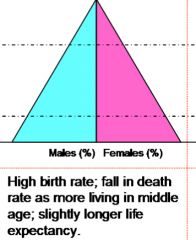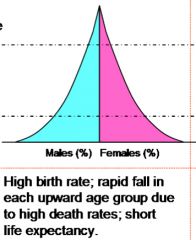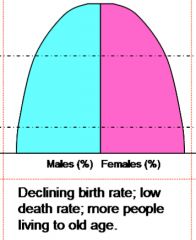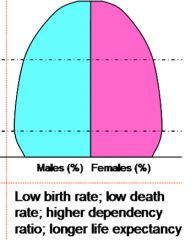![]()
![]()
![]()
Use LEFT and RIGHT arrow keys to navigate between flashcards;
Use UP and DOWN arrow keys to flip the card;
H to show hint;
A reads text to speech;
20 Cards in this Set
- Front
- Back
|
Ecosystem
|
More or less self-contained functional unit in ecology made up of all the interacting biotic and abiotic factors in a specific area
|
|
|
Ecological niche
|
All conditions and resources required for an organism to survive, reproduce and maintain a viable population
|
|
|
Poplation
|
A group of individuals of the same species that occupy the same habitat at the same time
|
|
|
Community
|
The organisms of all species that live in the same area ('see also population')
|
|
|
Habitat
|
The place where an organism normally lives, which is characterised by physical conditions and the species of other organisms present
|
|
|
Estimated population size
|
(∑first sample * ∑second sample)/∑marked individuals recaptured
|
|
|
What abiotic factors affect population size? ('4')
|
Temperature, light, pH, water and humidity
|
|
|
What are the two types of competition?
|
Intraspecific (same species) and interspecific (different species)
|
|
|
Remember what a predator-prey graph looks like and the delay
|
When predator numbers are high, prey numbers are low, and vise versa
|
|
|
Population growth =
|
(births + immigration) - (deaths + emigration)
|
|
|
Precentage population growth rate =
|
(pop change during period/pop at start of period) x 100
|
|
|
What factors affect birth rates? (Think)
|
Economic conditions, cultural and religious backgrounds, social pressures and conditions, birth control, political factors
|
|
|
Birth rate =
|
(No births per year/total population in same year) x 1000 (remember one THOUSAND)
|
|

|
Expanding
|
|

|
Expanding
|
|

|
Stationary/Stable
|
|

|
Contracting
|
|
|
Succession
|
A term used to describe the change of an ecosystem over time
|
|
|
Hostile conditions, low species diversity and instabilitity -->
|
Less hostile conditions high species diversity and stability
|
|
|
Succession flow chart
|
Barren land --> Primary colonisers --> Secondary colonisers --> Tertiary colonisers --> Scrubland --> Climatic climax
|

